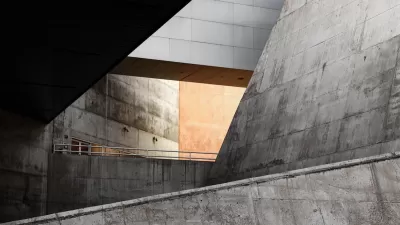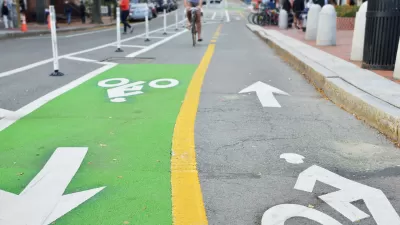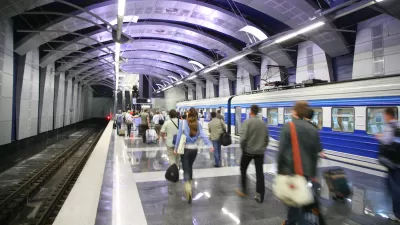A New Jersey town along the one of the state's light rail line has rejected a plan for adding new mixed-use residential to its downtown, for fear of new development threatening its main street's historic character.
"Residents in the [the Trenton suburb of Bordentown, New Jersey] recently voiced their opposition to a proposal that would encourage mixed-use and infill development, reports the Burlington County Times:
The ordinance would allow for the addition of up to 100 dwellings downtown. It would allow developers to put apartments or condominiums above storefronts and would increase the allowable height for buildings. Currently, developers have to obtain variances to do such things.
The rejection of the zoning changes was stoked by fears that the town's historic character would be threatened, among other things:
Some argued that the ordinance would create more traffic, noise and parking problems. If the town's population increased as a result of the ordinance, demands on municipal services and schools would also increase, possibly resulting in higher taxes for property owners, they said.
But as [Gary Toth of Project for Public Spaces] points out, pushing development outside the town center will create more traffic, not less. "Ironically, people oppose [the re-zoning] based on the incorrect assumption that it will add traffic," he said. "Yet what will take the place of the infill will be sprawl development which will choke off their quaint little town and make things far worse." "
FULL STORY: Historic Town Chooses to “Retain Its Charm” By Enabling Sprawl

What ‘The Brutalist’ Teaches Us About Modern Cities
How architecture and urban landscapes reflect the trauma and dysfunction of the post-war experience.

USDOT Revokes Approval for NYC Congestion Pricing
Despite the administration’s stated concern for the “working class,” 85 percent of Manhattan commuters use public transit to enter the city.

‘Complete Streets’ Webpage Deleted in Federal Purge
Basic resources and information on building bike lanes and sidewalks, formerly housed on the government’s Complete Streets website, are now gone.

Preserving Altadena’s Trees: A Community Effort to Save a Fire-Damaged Landscape
In the wake of the Eaton Fire, Altadena Green is working to preserve fire-damaged but recoverable trees, advocating for better assessment processes, educating homeowners, and protecting the community’s urban canopy from unnecessary removal.

The VW Bus is Back — Now as an Electric Minivan
Volkswagen’s ID. Buzz reimagines its iconic Bus as a fully electric minivan, blending retro design with modern technology, a 231-mile range, and practical versatility to offer a stylish yet functional EV for the future.

Investigation Reveals Just How Badly California’s Homeless Shelters are Failing
Fraud, violence, death, and chaos follow a billion dollar investment in a temporary solution that is proving ineffective.
Urban Design for Planners 1: Software Tools
This six-course series explores essential urban design concepts using open source software and equips planners with the tools they need to participate fully in the urban design process.
Planning for Universal Design
Learn the tools for implementing Universal Design in planning regulations.
Economic & Planning Systems, Inc.
UCLA Lewis Center for Regional Policy Studies
Mpact (formerly Rail~Volution)
Chaddick Institute at DePaul University
City of Piedmont, CA
Great Falls Development Authority, Inc.
HUDs Office of Policy Development and Research





























